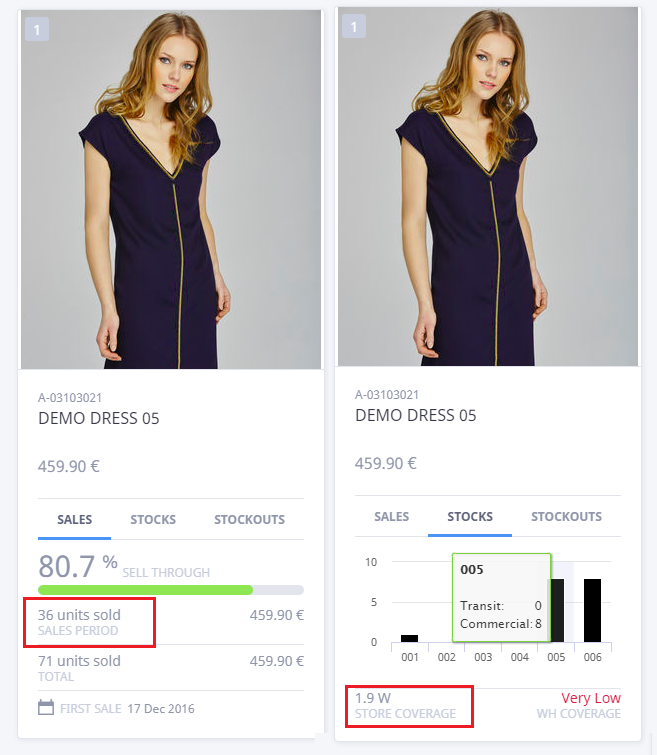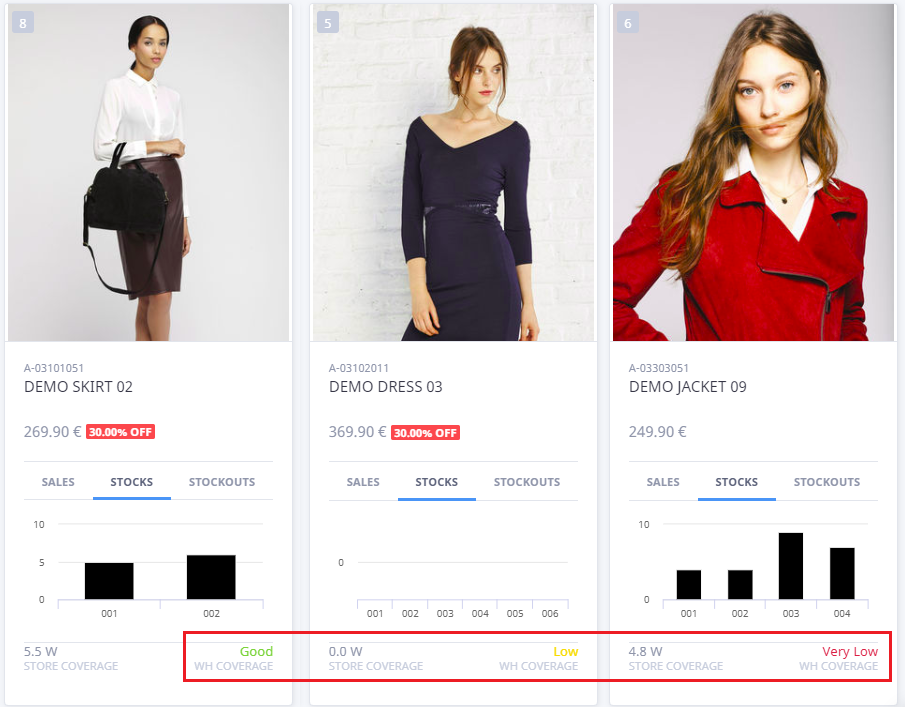Coverage: calculation and levels
Nextail has a strong predictive power that allows the retailer to have in store only what is needed to cover its sales.
Calculation
We calculate it as the ratio between stock and the sales in the last 28 days multiplied by 4 (in order to measure it in weeks). For example:
Product "A-03103021" in store "Acme 01" from 17 December to 13 January (last 28 days) has sold 36 units, and the stock at 13 January has 17 units, considering all sizes.
With this data, we can calculate: (stock:17 units / units sold: 36 units)*4 = 1.9 weeks.


On the product card of this store, we can see that the calculation matches the store coverage with 1.9 weeks.
This exercise is to show how it is done but there is no need to do those calculations manually because aggregated tables are available to do the calculations for us.
Levels
Instead of the calculation of warehouse coverage in weeks, stores have three different labels: Good, low and very low.

- Good: Warehouse coverage more than 6 weeks.
- Low: Warehouse coverage between 2 and 6 weeks.
- Very low: Warehouse coverage less than 2 weeks.
This information allows the store to understand the level of scarcity of each product in the warehouse. In this way, the store knows the probability of replenishment.